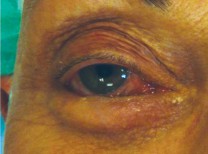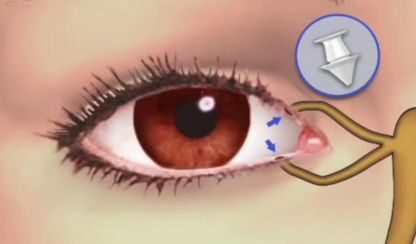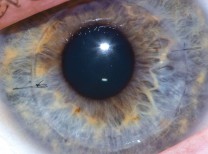With over 3 million operations performed annually in the U.S., cataract surgery is extremely common. But does it ever need to be performed twice?
Once a cataract is removed, it does not grow back. That being said, there are rare instances when patients may need another surgery months or years after their initial cataract surgery to replace or repair a lens implant. In this article, we’ll cover these scenarios.
The most common reason patients say their ‘cataract grew back’ is posterior capsule opacification. This is not a regrowth of a new cataract, but a clouding of the natural capsule behind the lens implant. Because it has similar symptoms as cataracts, such as glare, halos and decreased vision, a capsule opacification is colloquially referred to as a “secondary cataract.” Fortunately, a posterior capsule opacification is easily corrected with a simple office treatment called YAG laser capsulotomy.
The next scenario is one of the common reasons patients call for a second opinion consultation, and that is when there is an unexpected visual outcome after routine cataract surgery. Either the initial lens may have been the wrong power or the visual side effects of a multifocal lens implant are intolerable to the patient. In both cases, a lens implant exchange is warranted.
In an era with surgical time outs and electronic medical records, it is extremely uncommon that a wrong lens power is implanted during cataract surgery. However, factors in pre-operative measurements and planning such as prior corneal refractive surgery like LASIK, can confound computer formulas cataract surgeons rely on to select an appropriate lens power. If a cataract lens implant needs to be exchanged, it is best to perform the operation in the early post-operative period of the initial surgery. Rule of thumb is that if a lens needs to be exchanged, make the decision quickly and return to the operating room within the first few weeks of the initial surgery. The earlier a lens is exchanged, the lower the risk of complications.
The final scenario of having to perform a cataract surgery twice is when the initial lens implant dislocates. This can happen after trauma or in specific disorders like pseudoexfoliation syndrome (50% of all cases), Marfans’ syndrome, Ehlers-Danlos Syndrome, retinitis pigmentosa and prior vitreoretinal surgery. A lens dislocation can cause symptoms of oscillopsia (jiggling vision), rapid changes in focus, light sensitivity and glare. Some patients even report seeing the edge of the lens implant.
Fortunately, there have been major advances in surgical techniques that make lens replacement and repair surgery much easier now than ever before. Twenty years ago, it would take surgeons nearly five hours to perform lens repositioning surgery using the older techniques with large dissections and multiple stitches. Today, with modern techniques such as the Yamane, we can usually perform these complex surgeries in under an hour, often without the need for sutures. This means less surgery time and faster recovery for patients.
Dr. Tokuhara is a cataract surgeon with Desert Vision Center in Rancho Mirage and a member of Desert Doctors. He can be reached at (760) 340.4700. For more information visit www.desertvisioncenter.com or www.desertdoctors.orghttp://www.desertdoctors.org.














































Comments (0)